 |
G0MWT, GX0MWT, GB5HF, GB100MWT, G100RSGB & GB95-2MT
CARS Meetings: Jan - March 2019 |
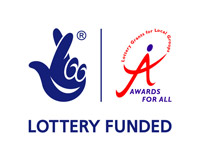
|
 |
G0MWT, GX0MWT, GB5HF, GB100MWT, G100RSGB & GB95-2MT
CARS Meetings: Jan - March 2019 |

|
©Copyright CARS
January Meeting
Tuesday 8th Jan 2019, 7:30-10pm
Oaklands Museum, Moulsham Street"Sub-Surface Comms"
Peter Bridgeman G3SUY
The January meeting was unusually on the second Tuesday, January 8th to avoid New Year’s day. Despite the cool winter evening it was well attended to hear all about a real challenge for radio – underground systems.
Peter Bridgeman G3SUY gave a well-illustrated talk of his time in Plessey and their development trials of the ‘Figaro’ system for use by the emergency services in tunnels. Venues included the London underground, or some other railway and sewer installations as well as a government bunkers!
The development of Figaro in the 1970s ran in parallel to VLF cave rescue equipment such as the Molephone by Lancaster University and later the Heyphone by John Hey G3TDZ) which run at ~87kHz Unlike VLF caving (or current UHF approaches), Plessey had remarkable success with HF and loop antennas. The happy reason for this was a number of reasons as became apparent in early tests:
- The loop antennas were relatively efficient for their size/wavelength (esp compared to VLF) and tended to suppress noise
- Background noise levels were generally better at HF than VLF
- The cables lining a number of the manmade tunnels effectively carried induced currents or acted as offset coax and could assist the propagation - rather than the usual problem where a cut-off-waveguide effect quickly kills propagation
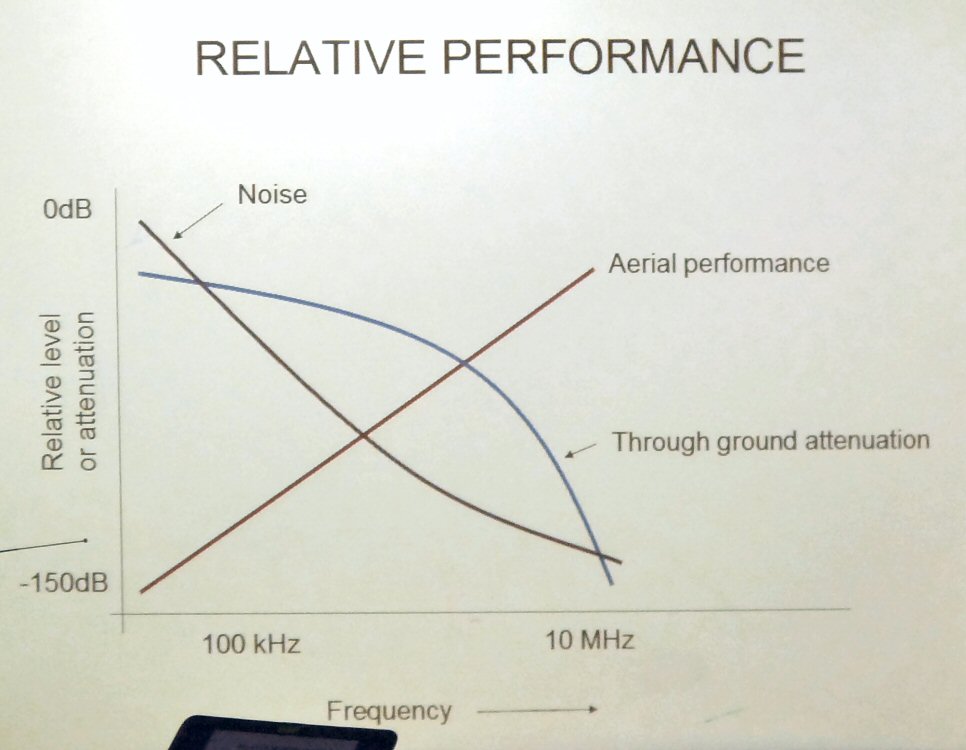
Factors for frequency selection/performanceSo for Figaro the optimum frequency range was between 3 and 6 MHz. And the reason for the name?...
FIre Ground Apparatus for Radio Operations
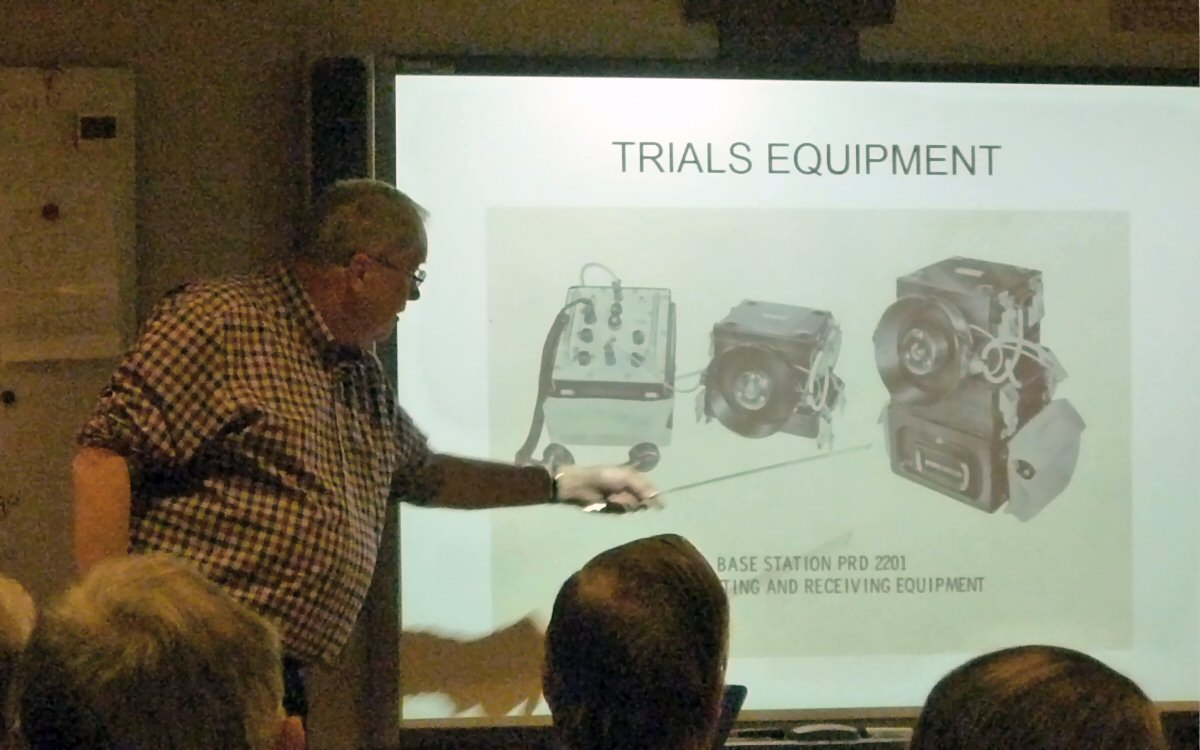
Figaro Radio EquipmentThe trials ended up in all sorts of locations including various London underground tunnels, Clapham Common Deep Shelter, the Wheel Jane and South Crofty mines and the Severn Railway tunnel. Some of the metallic lined tunnels did indeed act a waveguides where performance dropped down within yards.
Despite a great technical effort over two years of trials, the government would not pay for the development costs that would be spread and levied over the production models. In the end only two systems were ever purchased - one by the Home Office and the other by the London Fire Brigade.
However Figaro did see real action once – during the Feb-28th 1975 Moorgate disaster. It was later retired around 1986 and superseded by leaky feeder being installed in the London Underground tunnels.
- Our thanks to Peter G3SUY for a great piece of storytelling!!Following the break the CARS Raffle was drawn. With Chairman Elliot 2E0JSE away, Bob G4MDB did the draw and also made a somewhat overdue presentation…
Bob G4MDB presenting John G8DET with his delayed certificate
for the Constructors Competition 3rd PlaceUseful Link:
Figaro - Useful web page: www.dtels.org/html/sub_surface_radio.html
February Meeting
Tue 5-Feb-2019, 7.30-10pm
Oaklands Museum, Moulsham Street"Data Modes for all Occasions"
By David Cutts M0TAZThe February meeting proved to be a popular one for a well-presented talk on Data Modes by Dave Cutts M0TAZ. Dave operates most data modes, and enjoys RTTY contests:
"I don't chase awards, but do enjoy keeping track of my LoTW digital and WAS count. I enjoy alternative data modes, so quite often can be found in ROS, JT65, JT8, JT9, MFSK or Olivia modes. Experimenting with 160m loaded vertical on JT65 over the winter."Dave first spent time explaining the basis of many of them including their tone structure and use of Forward Error Correction (FEC) – which is why they perform so well at lower power, or in poor propagation conditions.
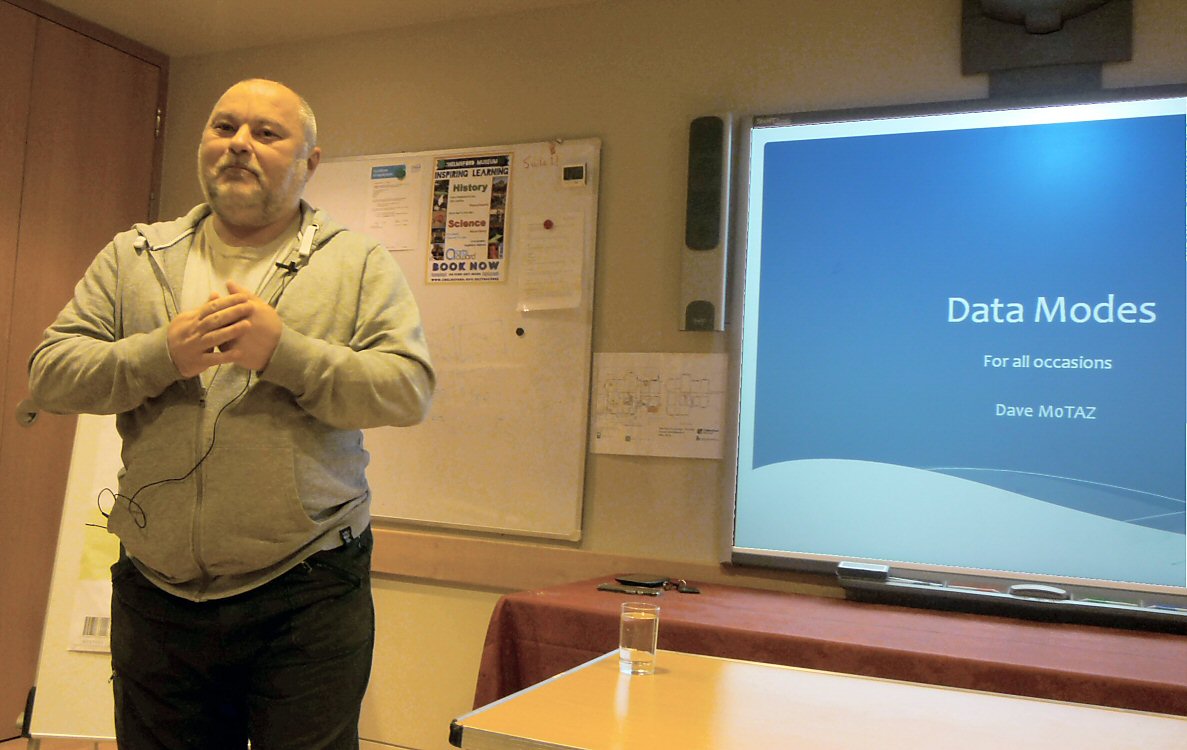
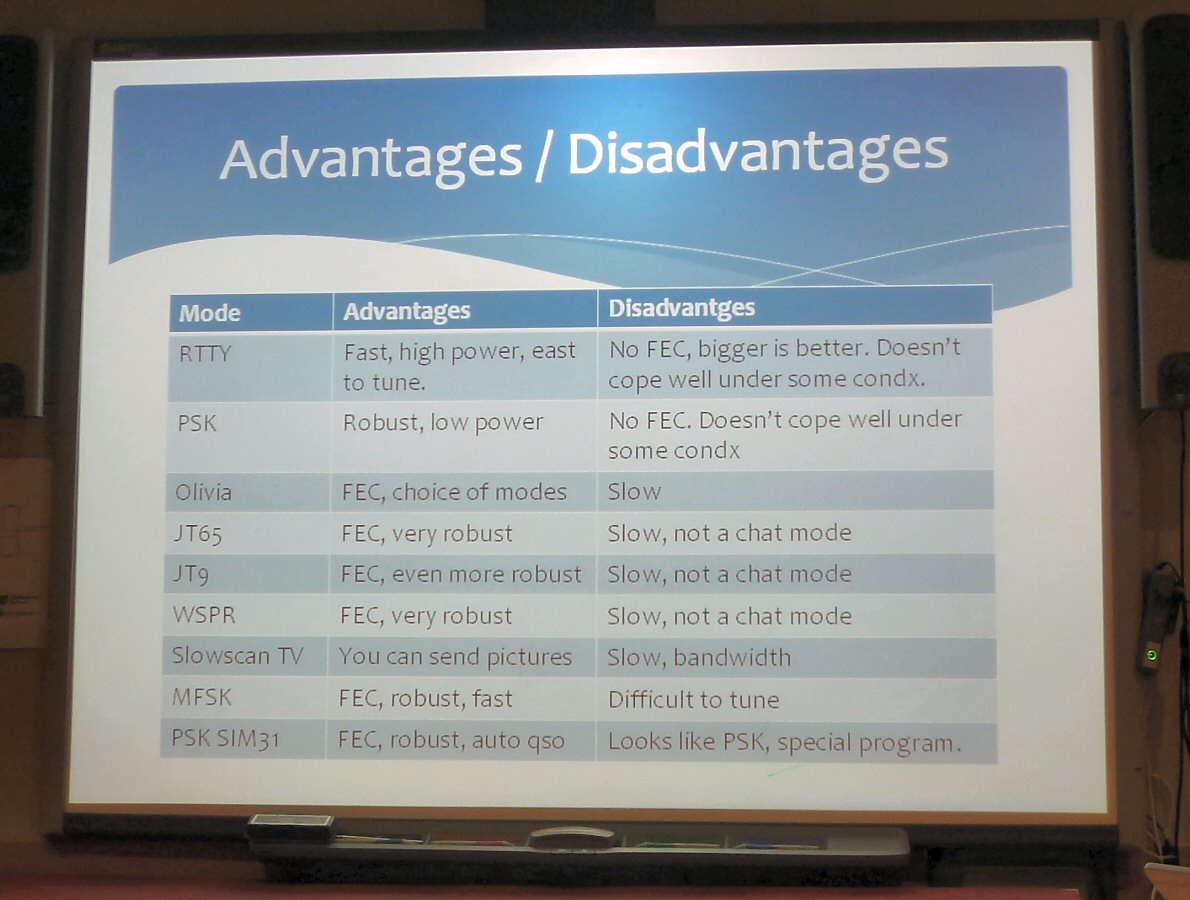
The talk gave a great insight into modes and soundsOf course datamodes are not new CW and ‘Hell’ have been around a long time (Hell dates back to ~1920. RTTY also has old origins, but recently we have had PSK and of course the newer WSJT suite (WSPR, JTxx, MSK, FT8 etc).
In the past identifying them on air took a skilled ear but the variety of them (especially courtesy of the JT suite) makes that harder. Fortunately waterfall displays are increasingly common thanks to SDR transceivers. David also gave a useful summary of various datamode advantages and drawbacks. See the useful links below for a couple of handy websites.
There are sound clips online useful for identifying modesCARS refreshments and raffle followed the talk. Our thanks to David - and we look forward to his return.
Refreshments break - tea, coffee, biccies and cake!Useful Links:
Fldigi by W1HKJ: Files Fldigi Modes: Digital Modes - Sight & Sound George M1GEO: Modes
March Meeting
Tue 5-Mar-2019, 7.30-10pm
Oaklands Museum, Moulsham Street"Offshore Radio"
By Jim Salmon 2E0RMIThe March meeting saw Jim 2E0RMI provide a fascinating insight into the history of offshore radio including both ‘pirates’ and others.
Jim started his presentation with some photographs he had taken on a recent holiday in India. There were shots of Buildings with dreadful construction faults, most left unfinished but still in use and with scaffolding (roped bamboo poles) and reinforcing verticals for further extensions. Being in the building industry he horrified us with the detail! He also showed poles with mains and telephone wires all mixed up in a terrible untidy spider’s web saying the power often failed and he would not like to be the poor engineer to deal with it!
Jim told us that offshore radio in its various forms had been attempted much earlier than we all imagined with the Daily Mail (who famously paid for Nellie Melba to come to Chelmsford) sponsoring in 1928 an attempt to broadcast from the vessel ‘Ceto’. This did not really work due to bad weather and ended with them using loudspeaker audio for concerts close to the coastline around the UK.
In 1920 Marconi’s vessel ‘Elettra’ was used to carry out experiments and transmit gramophone records on long and short wave frequencies. So was this one of the first offshore broadcasters?
In 1952 the U.S. vessel ‘Courier’ used a helium balloon to hold up an aerial off the Greek Rhode Island to transmit the Voice of America.
Radio Mercur was the first Scandinavian offshore station off Denmark, using FM with a 20kW transmitter and a steerable aerial to keep the signals towards the shore. Then appeared the ‘Bon Jour’ vessel for Radio Nord off of Sweden (this vessel later became the Mi Amigo - eventually Radio Caroline South).
Jim gave us detail of the legal laws and difficulties of operators wanting to get into Offshore Radio pointing out that these were not pirates until the authorities passed laws to restrict them or the service vessels keeping them in stores and personnel.
Others followed - Radio Syd off Sweden, and closer to home, Radio Veronica off the Dutch coast and Radio Antwerpen off Belgium. Early attempts to set up UK offshore stations were unsuccessful with GBOK, but in 1964 a young Irishman, Ronan O’Rahilly, became the first person to start a ship based station off the UK coast, narrowly beating the rival Radio Atlanta.
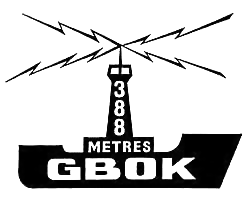
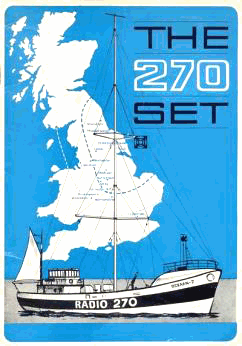
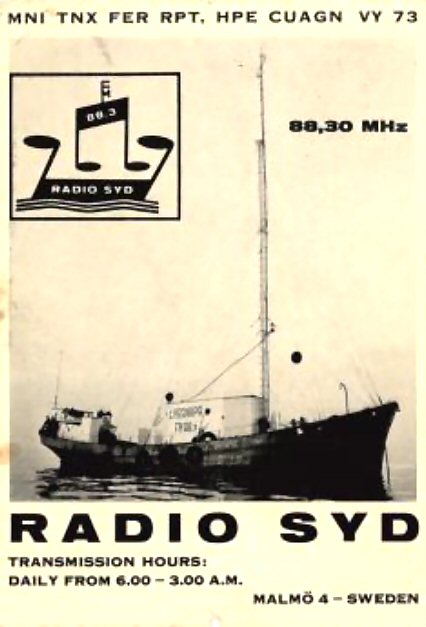
GBOK – aborted attempt, Radio Syd, Radio 270, Radio Essex (on Knock John Sea Fort)This started the ball rolling with many others following over the next three years broadcasting from vessels or abandoned army or navy forts around the UK coast. Radio(s) Sutch, Invicta, King, 390, London, Tower, Essex, Scotland, England, Britain Radio, 270, City… and more! At one point, up to 10 or 11 ‘offshore’ stations were transmitting to the UK.
Jim showed pictures of all the stations including Radio 390, a sweet music station playing light and classical music which was extremely popular with the older generation, Tower Radio from the Sunk Head Tower who attempted TV transmission without success, and Radio Essex from the Thames estuary Knock John fort with a low power station. We also saw pictures of the crew and DJ’s after the rescue when Radio Caroline broke loose in a 1965 storm and ran aground on the coast.
After the fateful shooting of Radio City’s Reg Calvert and to prevent further unlicensed broadcasters, The ‘Marine Offences Act’ was passed in 1967 resulting in all but the two Radio Caroline stations closing down. In 1968 Caroline was subject to real piracy with the two ships towed to Holland.
Jim continued the story looking at offshore radio around the world and Radio Hauraki on the Tiri-II in New Zealand. In the 1970’s & 1980’s there was another offshore radio revival with Radio Veronica continuing off the Dutch coast, joined by RNI, Capital, Atlantis, and a returning Caroline. History repeated itself with a similar closedown in 1974 of all these stations with the exception of Caroline until the Mi Amigo vessel finally sank in 1980.
Once again Caroline re-surfaced, this time in 1983 from the ex-fishing trawler ‘Ross Revenge’, and was soon joined by the brash American ‘Laser 558’. We saw pictures of Caroline then and now, with recent shots of the Ross Revenge now anchored in the River Blackwater, and the current transmission mast used by them for 648kHz at Orfordness - ex BBC World Service!
Jim also touched on offshore stations off the coasts of Israel and the then Yugoslavia, the Gunfleet lighthouse, Sealand, and& a whole set of pictures of radio ships which had lost their masts! He ended with a recording of a request recently played for him on Caroline, whilst listening in India! Thanks Jim - you must have taken many hours to acquire all the facts and pictures for your most interesting presentation.
Write-up by Tony Gilbey G4YTG
Some of the audience for this popular talk
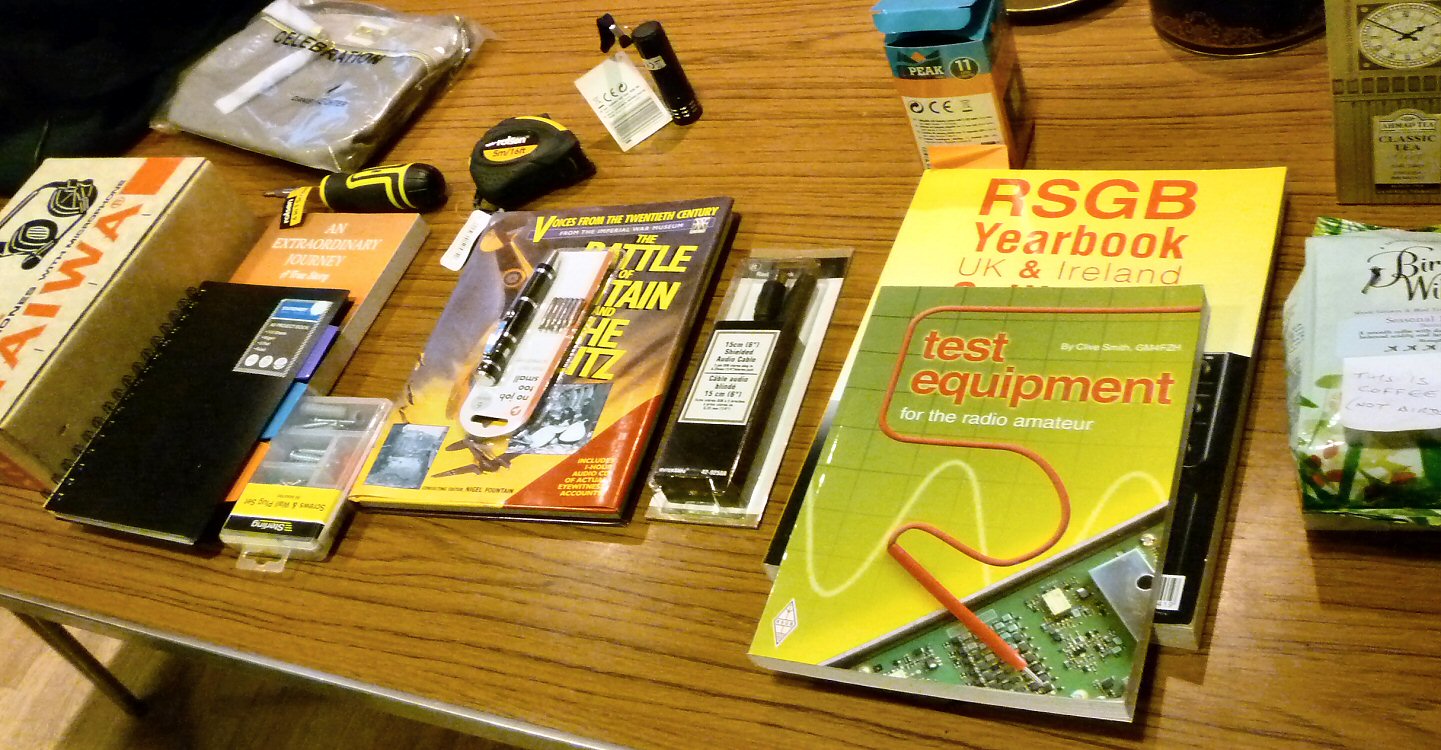
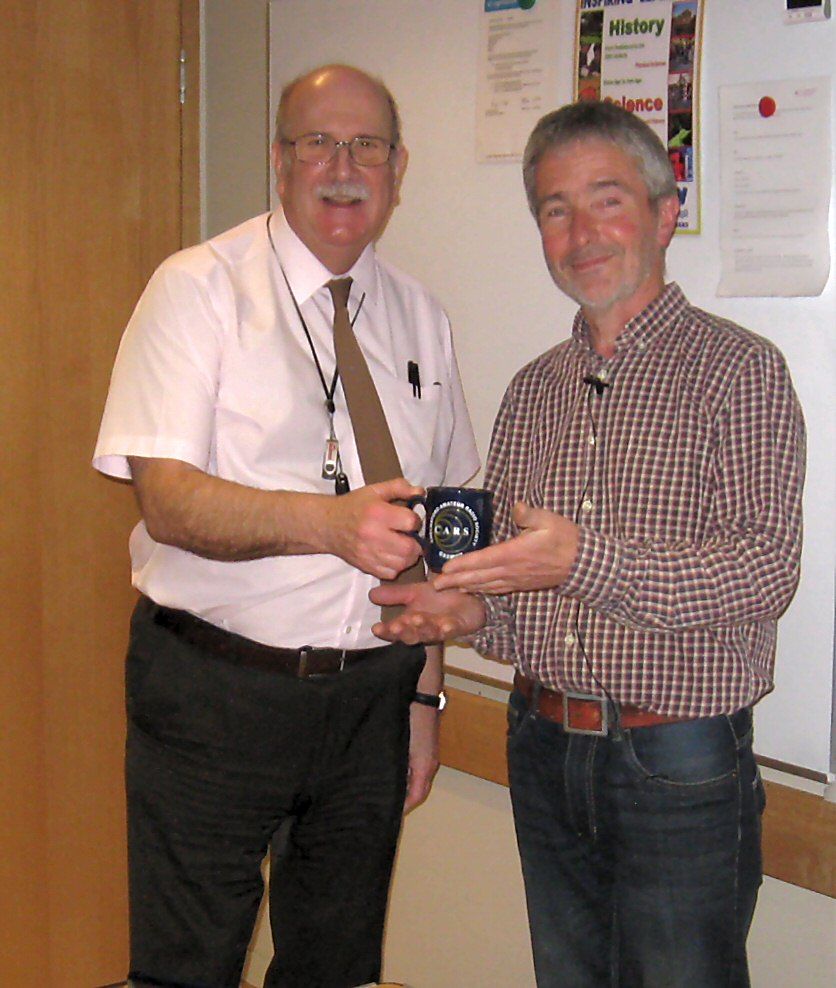
After the break: The Raffle - and The Speakers Mug being presented by Chairman Elliot 2E0JSE to Jim 2E0RMI
To RETURN to the Meetings Page - Click Here
To RETURN to the CARS Home Web Page - Click Here